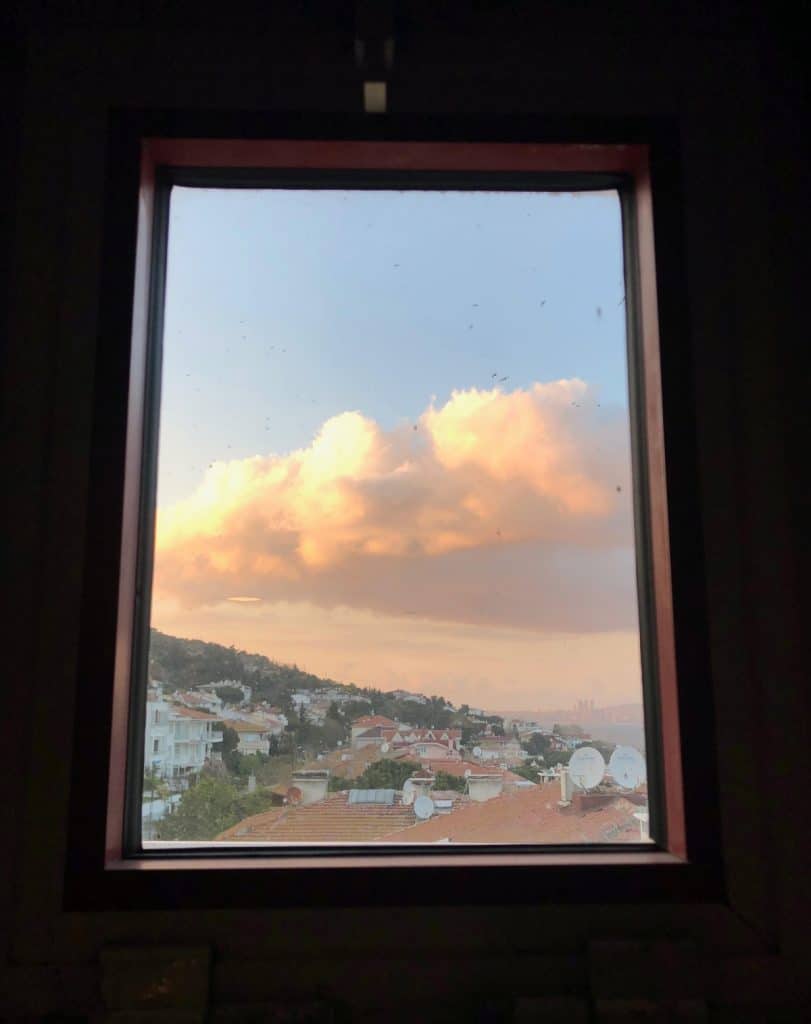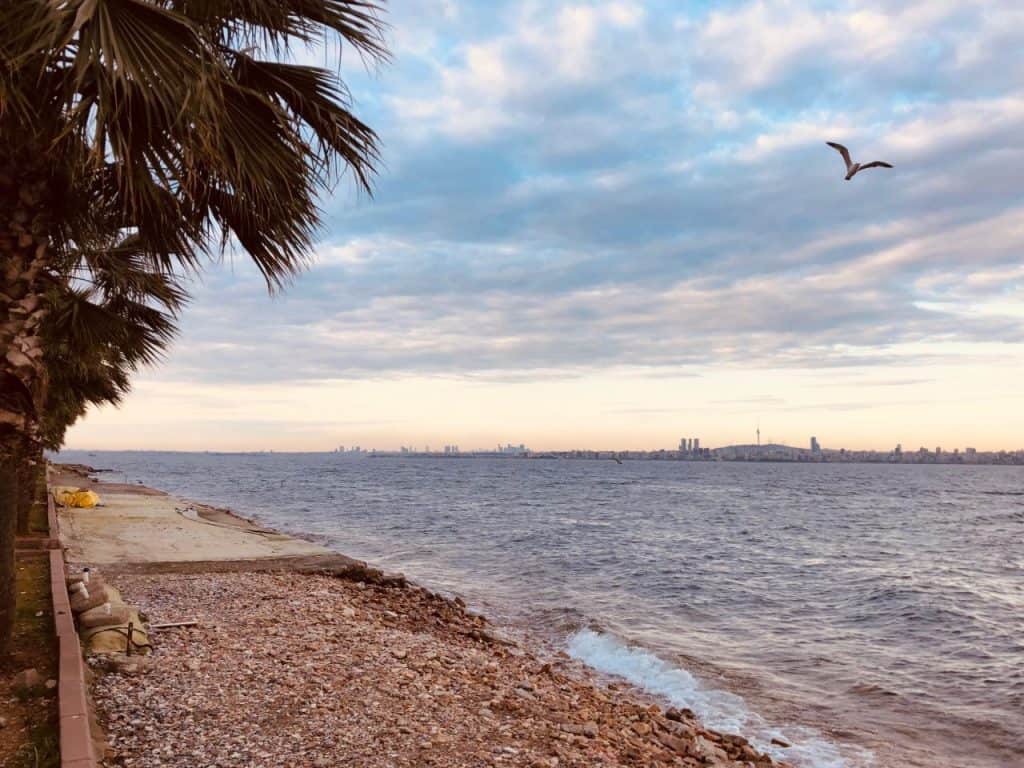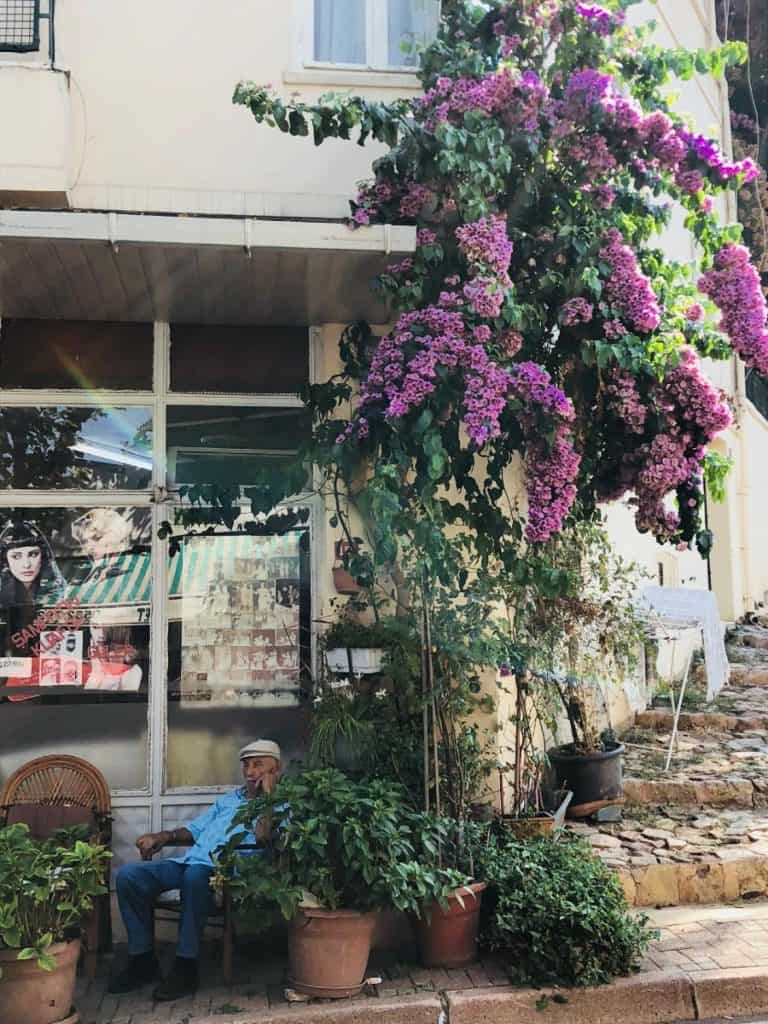Every time I head out to the islands, I look back on the Istanbul skyline as I imagine the first astronauts gazed down upon the earth’s surface. As the cosmologist Carl Sagan famously described this perspective-shifting image as the ‘pale blue dot,’ I regard Istanbul, once I’ve fled from it, as the ‘spiky orange haze.’
To take that simple, singular step from iskele to vapur, land to water, is to coast away from the concrete chaos of the city into the blissful breeze of island life. No more traffic, no more dolmuş, no more noisy neighbors. Every time I come, I wonder why I’ve waited so long since my last visit.

Situated in the Sea of Marmara, The Princes’ Islands (‘Prens Adalari’) are a string of nine relatively small islands, of which only four are accessible to the public. The name originated from the royal princes and empresses who were exiled to the islands during the Byzantine period. They went on, with the dawn of steamboats during the late Ottoman period in the 19th century, to become a popular summer home location for wealthy Turkish, Jewish, Greek and Armenian communities. Although these demographic clusters still exist today, the islands’ current residents are primarily Turkish.
While the winter months are only for the real, rugged locals, in the summer the beaches and bike paths flood with tourists and Istanbulites desperate for a breath of fresh air. Apart from municipal vehicles and residents on scooters, motorists are forbidden from the islands’ streets, so visitors must either walk, bike or take a horse-drawn carriage (‘fayton’). There are also small boats running from the main wharfs to various, private beaches dotted around the islands’ rocky coves. The cleanliness of the sea is debatable, but other than the minor trauma of brushing up against a harmless jellyfish, most swimmers seem to emerge unharmed.

Each island has its own, unique character and appeal, and for each I have vivid images and memories. On Büyükada–the stunning, panoramic view from Aya Yorgi Monastery and the sunset rakı-balık at Eskibağ Teras. On Heybeliada–the quaint people-watching perch, Luz Cafe, and a blissful evening of reading on the front stoop of the Heybeli Sahaf bookshop. On Burgazada–the hippy camping grounds at Madam Martha Koyu and its breathtaking western cliffs at dusk. On Kınalıada–the modern, Turkish mosque by the sea, the Armenian church and its peaceful, floral courtyard and the Greek monastery set atop the hill amidst a silent field of swaying grass.
After on many occasions rushing to catch the last ferry back to the mainland, I decided simply to stay–whether in a small pension or a boutique hotel on Büyükada, a rented apartment on Heybeliada or camping on Burgazada–spending the night is of course the best way to get into the rhythm and spirit of island life. I’m writing these very words seated in the simple, modern flat where I’m currently staying on Kınalıada, on a hill overlooking the red-brown rooftops, lush greens, beach and sea. There’s only the sound of swooping seagulls, the wind in the trees, a couple of neighbors chatting over breakfast and the hum of an occasional ferryboat passing.

From December until June, I’ve stayed here every 2 months for at least a couple of days at a time. I’ve witnessed the transition from the cold and barren winter months, when my sole, daily interaction was with the old, bearded man at the tekel, through the blooms and fresh-paint of spring, to the recent Ramazan Bayramı, when the iskele teemed with tanned, smiling faces eating ice cream and the backstreets filled with kids playing football and couples dining out on their terraces. The embedded sense of community–whether a few, comforting words at the tekel in winter, or while strolling through a neighborhood of families who have been summering here for generations–is very much alive.
That I can see the Istanbul skyline from where I now sit only deepens the contrasting worlds–just last week I was stuck in a minibus, sweating and questioning my urban existence, while now my only concern is when to take my daily bike-ride around the island. Why would anyone consciously choose to live there, I wonder, rather than here? Well sure, because their friends and families and jobs (without which they couldn’t afford to stay on the islands) are there, that’s true. Speaking of which, the holiday is nearly finished and I should check the ferry schedule… and thus I crash, after each glorious getaway, back down to earth.
All images courtesy of the author.
—
This article was originally published in June 2019 by the author.









